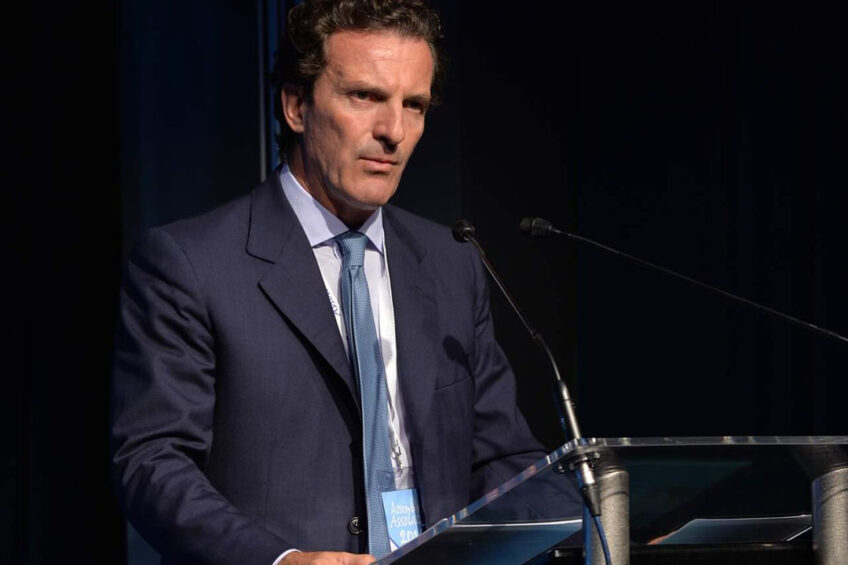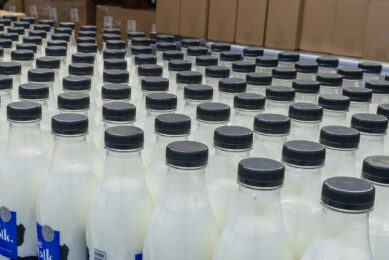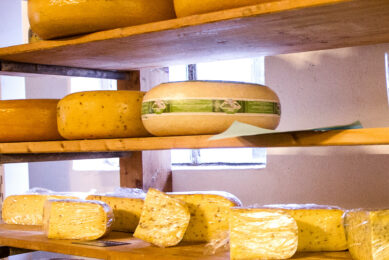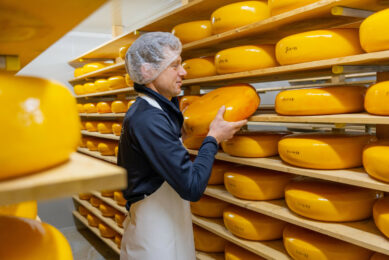‘Uniting dairy excellence and ambition’ is more than a motto

At the start of 2021, the European Dairy Association (EDA) board announced the election of Giuseppe Ambrosi as its new president. In this new role, he has brought a wealth of knowledge about the European dairy sector and has set out to promote and reinforce the image and reputation of milk and dairy. We caught up with EDA president Ambrosi who, in his own words, sheds a brighter light on the European dairy sector.
It’s been almost a year since you took on this position – was the year what you expected it to be?
We were expecting turbulent times ahead and we were not deceived – and it helped that the dairy market’s environment gave a rather stable framework throughout the last year.
The final steps of the new Common Agricultural Policy required quite some attention – and here, the efforts we made since 2018 on this work paid off, at least at EU level. Now, the national strategic plans need to be dairy-operational, but this is a question at member state level.
The European Commission has intensified the work on spelling out the Green Deal and the Farm to Fork initiative. There is the huge challenge to propel our ways of dairying all over Europe to an even more environmentally sustainable level. But along with this challenge, we have to adapt our company and farm strategies to the legal framework that is materialising piece by piece. In quite a number of high-level meetings in Brussels and in our October 2021 EDA conference in Brussels we promoted our dairy approach for sustainable dairy and food systems. When EU executive vice president, Frans Timmermans, visited a dairy farm in Belgium in December last year, we felt our messages were starting to be heard.
And then, the groundwork of a European trade association is ongoing: trade issues, including several big [free trade agreement] FTA projects and FTA revisions, food law issues, environmental issues…and our European dairy industry mastered the Covid-19 challenges in 2021.
When you first started as president of EDA, what new avenues did you want to explore in this role? One of the focuses was to promote and reinforce the image and reputation of milk and dairy – why is this needed and what is the status now?
‘Uniting dairy excellence and ambition’ is the new EDA motto line that I introduced. And this is more than a motto line; it is the essence of our industry. The huge, overwhelming majority of Europeans are dairy fans and our dairy excellence has gained its global reputation for good – very good – reasons. We have to reinforce and echo this reputation, which is, after all, the basis of our success. Within the lactosphère, we all have to be outspoken and passionate ambassadors for milk and dairy. Only on the basis of our excellence can we live up to our ambitions.
And this is an ongoing process. We have started to see how to align dairy communication at national and European levels. We are also exploring ways to step up our communication efforts: our colleagues in the whey business have done a great job in reaching out on social media with wheyforliving.com.
But ‘Uniting dairy excellence and ambition’ is far more than a communication tool – it is really meant to guide our actions at European level and to shape the mindset of our common strategies.
What are the challenges that you foresee for European dairy processors?
The Green Deal is set to change the way our economies work – that’s what European institutions have agreed to. This political agenda forces us to speed up our sustainability roadmaps and to align them to the new legal frameworks.
We have the technological excellence and ambition to deliver and to be part of Europe’s 2050 climate-neutral objective. The real challenge is to stay on course towards this overarching goal while being forced to manoeuvre through a multitude of obstacles and face headwinds set up by European and national authorities.
With the Green Deal materialising, another challenge for our industry will be adapting to a scenario of decreasing milk supply in Europe – a change to the tectonics of European dairy, which will affect all pillars of our industry.
In your opinion regarding EU dairy sustainability, what would you like to see more of in order to champion further sustainability in the sector?
On a political level, we would like to see more prominent and more audible support by European authorities. EU dairy is the most advanced when it comes to environmental sustainability: we have developed, together with the European Commission, the Dairy PEF [product environmental footprint], we have subscribed as an industry to the Green Deal ambitions and we did not wait for the European Commission to take this avenue. All dairy processors, whatever size and whatever structure, have their environmental sustainability strategy in place and are investing heavily in its implementation. And these efforts have to be balanced out with the social and economic sustainability of our sector.
And here, we need some tailwind via, inter alia, an operational carbon stockage system that recognises the carbon sink value of pastureland, or via a consideration of the very limited impact of cows’ methane emissions on today’s global warming.
At EDA we are working on our European Green Dairy Deal, an EU-wide assessment of our role in achieving all environmental sustainability indicators of the Green Deal.
What is your vision for the European dairy sector for the coming 5 years?
On the basis of full recognition of the unique nutritional quality of milk and dairy, its environmental added value and the social and economic role of European dairy, we will strengthen our position as the global benchmark for food safety, food excellence and sustainable production.
‘Uniting dairy excellence and ambition’ will be the successful strategy for the European dairy sector to adapt our way of dairying to the new market landscapes and to the expectations of the citizens in Europe and beyond.
Join 13,000+ subscribers
Subscribe to our newsletter to stay updated about all the need-to-know content in the dairy sector, two times a week.










